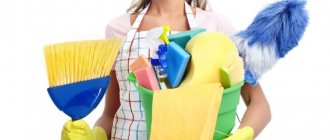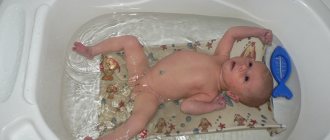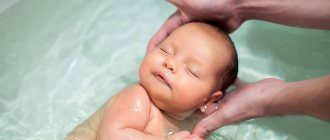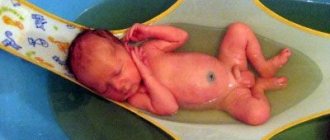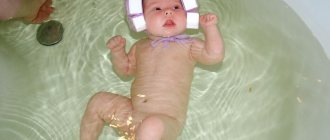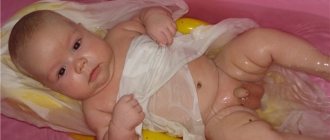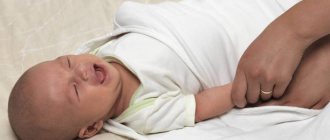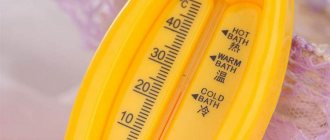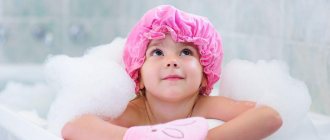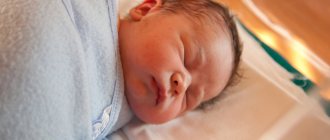What to do if a child does not like to wash and screams?
Such situations do occur, says Komarovsky.
But the point here is not at all about the child and not even about the fact that he is afraid of something. Most likely, according to a famous pediatrician, bathing conditions should be adjusted. Maybe the water temperature does not suit the baby - it is too high or too low for him. After experimenting for several days, parents will be able to understand which water is most comfortable for their child. Bathing should begin with it - and only then adjust the temperature in favor of cooling (adding cold water in a thin stream) or heating (adding hot water in the same way). For example, a mother tries to bathe her baby only at night, and it is at this time that the child wants to sleep and not bathe. Therefore, Komarovsky gives some advice that will help parents whose children have trouble in the water:
Change the time of day.
Change your eating and bathing routine. If your baby screams when bathing half an hour after eating, then try bathing him half an hour before eating (or vice versa).
Practice sharing baths with your baby.
What to do after swimming
After the water procedure is completed, you should proceed to the actions carried out after bathing. Traditionally, the baby should be wrapped in a dry, soft towel and carried into the room.
Note! Regardless of whether a boy or a girl is being bathed, the actions after bathing will be the same. Only the manipulations with drying various organs will differ. Let's consider the main nuances that must be performed after taking a bath:
Let's look at the main nuances that must be followed after taking a bath:
| Taking the baby out of the bath | This should be done by grabbing the baby under the arms. Then immediately throw a clean towel or diaper over the child’s head and wrap the whole body completely |
| We blot the skin | Having brought the child into the room, we place him on the changing table and use cotton swabs to blot all the folds. Boys must wipe the skin of their scrotum |
| We treat the skin | After moistening a cotton swab in olive or special baby oil, you should treat all areas of the skin. If there are diaper rashes, sprinkle them with powder |
| Dressing the child | After the manipulations, the baby must be swaddled and put on a diaper. |
| Ear cleaning | This procedure is important, but at a later date. We take a piece of cotton wool and wrap it around a match, then remove it and carefully remove moisture from the ears |
Usually after bathing the child wants to eat. Feed your baby breast milk and put her to bed. Sleep after these procedures will be sweet and long.
Daily morning care
After discharge, every morning of a newborn baby should begin with washing. To do this, a cotton pad is dipped in boiled warm water and squeezed out, after which it is wiped with a damp pad:
- Baby's face.
- Baby eyes. Movements should be from the outer corners towards the nose. Use a separate cotton pad for each eye.
- Baby ears. You need to wipe the skin behind the ears and the curls of the shell.
- Baby's neck.
In addition, the mother should examine the baby’s entire skin daily and promptly identify redness in the folds. When diaper rash appears, the baby is recommended to take air baths and special cosmetics.
In the next video, Candidate of Medical Sciences Ainur Tazhina, together with a guest doctor, will help you figure out how to properly care for a newborn.
Navel treatment
A newborn's belly button usually heals during the first two weeks of the baby's life. Treatment of the navel should be carried out until complete healing.
After bathing, the wound that remains after the umbilical cord has fallen off should be treated as follows:
- For processing, you need to prepare cotton swabs and a peroxide solution.
- Mom definitely needs to wash her hands.
- A cotton swab is moistened with peroxide, after which the wound is treated so that it is cleaned of discharge.
- Remove the remaining peroxide with a dry stick.
- Soak another cotton swab in antiseptic and treat the navel. Most often, brilliant green is used, but it can also be chlorophyllipt, iodine solution or calendula tincture.
- Try not to touch the skin when processing.
Washing and diapers
After each bowel movement, the newborn baby should be washed. If there was no stool, washing is carried out every 2-3 hours. This procedure is carried out under running water, since washing in a bath or basin can cause a urinary tract infection. Don't forget to make sure that the water that comes out of the tap is at a comfortable temperature for the baby. When washing a newborn girl, you should move from front to back.
To learn how to bathe a newborn baby, watch the following video.
When washing is completed, place the baby on a changing table or sofa, then use a clean diaper to remove water from the skin using a blotting motion. Next, treat the folds with a cotton ball lubricated with vegetable oil. You can also use baby cream to treat wrinkles.
Diapers for a newborn can be either disposable or reusable. The baby should not stay in a disposable diaper for more than 4 hours. Put a diaper on the newborn baby so that the navel remains open. This will promote faster healing of the wound. During the day, the child should spend some time without a diaper.
For the rules of daily care for a newborn, watch the following video.
Some more bathing tips
You should bathe your child every day, but with soap no more than 1-2 times a week. For example, just after being discharged from the maternity hospital, you can wash your hair for the first time with soap and that’s it. Next time maybe in a week.
The baby always likes to bathe
The fact is that babies don’t get dirty, and if some part of the body gets dirty, you can simply wash it. The less soap you use, the less likely your child will develop dermatitis and various allergic reactions. You just need to wash it with water and that’s it.
The same goes for washcloths for children. In the first weeks of life, the best washcloth for a baby is the mother’s hand. The baby's skin is very delicate and thin; there is no need to break the baby's protective barrier. Well, if you use washcloths, then terry mittens and soft washcloths for babies work well.
You should not use different herbs. Especially in the first months, the child may experience allergic reactions. The most harmless would be chamomile. It has medicinal properties. It can also be used 1-2 times a week by brewing 4 sachets and pouring them into a bath.
Also, after bathing, you can wipe your child’s ears with special cotton swabs with restraints, but do not go inside under any circumstances, just the auricle and that’s it.
You can use various slides or nets for bathing, holding devices, since there are many different types, the main thing is that it is comfortable and hold the head in the same way.
Also, I want to give you some video lessons, because I understand that for some it is better to see once than to read several times:
https://youtube.com/watch?v=Jl3V2PuMWTQ
What will you need for your first bath at home?
It is better to find everything you need in advance and bring it to the room where the procedure will take place. This way you can avoid unnecessary distractions and panic. Prepare everything in order:
- Bathing room. It must be chosen taking into account factors such as air temperature (at least 22°C), the risk of drafts, lighting, and ease of movement. This could be a bathroom or another room that has a table to place a baby bath on.
- Bathing container. If this is a regular adult bath, it will need to be thoroughly washed with baking soda. The best option would still be to buy a special baby bath, which can be placed on an adult’s, using a wooden lattice, or on a strong table in any room.
- Boiled water. Until approximately one month of age, it is better to avoid contact of the baby with unboiled water, because it carries the risk of infectious infection. Not all experts share this opinion - some believe that boiling water with a healed umbilical wound is not necessary.
- A soft terry towel and a flannelette diaper for drying the newborn after the procedure.
- A diaper for changing or clothes that the baby will wear after he has dried off.
- Assistant. You probably won’t have to look for it for a long time, since the baby’s loved ones will be happy to help the parents in this interesting and responsible matter.
To make bathing at home truly enjoyable for all participants in the process, you need to pay attention to some more important nuances
What should be a comfortable water temperature?
Preparing water for a baby is a very delicate and important matter. If the water is colder than necessary, the baby may become chilled, and hot water, on the contrary, will burn the delicate skin, which is why bathing will cause fear in the future.
The water temperature for the first bath should be close to body temperature and be 36.6-38°C.
In order to harden the child, it is recommended to reduce the temperature by 1°C every week until it reaches 26°C. If the house is cool at the time of bathing, the water should be left warm at 38°C.
It is necessary to check the temperature with a special thermometer for the bathroom, and not with your elbow, since each person’s sensations are subjective.
Is it permissible to use potassium permanganate?
Since ancient times, in the first weeks of a newborn’s life, people have added potassium permanganate powder to bathing water. This is a well-known remedy that helps make water almost sterile.
Potassium permanganate dries out the skin, so its use is not suitable for all children. The quantity is calculated so that the water turns out slightly pink. For the umbilical wound, potassium permanganate is safe and even useful, as it promotes its speedy healing.
Is it possible to use herbal decoctions when bathing?
Herbs such as chamomile, string and sage are effective remedies for treating skin irritations:
- prickly heat,
- diaper rash,
- diathesis,
- eczema
- and other dermatitis.
Therefore, if necessary, as well as for prevention, they can and should be used. Decoctions are prepared in accordance with the description on the packaging. The saturation should be such that the water becomes the color of freshly brewed green tea.
Potassium permanganate dries out the skin and is not suitable for all children.
Herbs for bathing newborns
Already during the first bath of a child, you can add decoctions from plants such as:
- tripartite herb - to relieve skin irritation, get rid of rashes, miliaria;
- chamomile flowers, calendula - helps normalize digestion and calm the baby;
- oak bark - to improve blood circulation;
- medicinal valerian, motherwort - for restful sleep, headache relief;
- celandine, which helps heal microscopic wounds, get rid of allergies, itchy skin.
Remember that fanatical use of herbal infusions can have the opposite effect in the form of allergies! Recipes for making decoctions must be agreed upon with specialists who, starting from the child’s first bath, will help create an individual algorithm for water procedures for a long period.
Preparing for a baby's bath.
Of course, everyone is worth listening to, especially grandmothers, they will be pleased. Of course, you will use something, but you will still do it in your own way. This is from personal experience.
And so, you came from the maternity hospital and on the first day you need to bathe your child, what to do first:
Don't panic, don't be afraid! This is very important, as the baby will feel it and may be afraid of water. Don’t forget - the child feels everything, all your emotions and feelings. Bathing is necessary either 1 hour after feeding, or 1 hour before feeding. The room where you bathe your child should be well ventilated and warm
If you bathe in the bathroom, close the door to avoid drafts.
The bathtub must be washed thoroughly; you can use baby dishwashing detergent, baking soda, and pour boiling water over it.
The water temperature should be about 37 degrees. All the same, while you are carrying the baby and getting ready, the water will cool down and the baby will enjoy it. You don’t need to take a lot of water, about 2/3 of the bath, a little less is possible. It is better to prepare a ladle with warm, clean water and place it nearby. The temperature of the water should be approximately 36 degrees. It can be warmer, it will still cool down. This is for dousing a child. Also prepare a towel (not hard) or a diaper in advance. It is advisable that it be heated. Your hands should be clean, it is better to simply wash them before swimming. Also remove all jewelry from your hands; it is advisable to keep your nails short, so as not to harm the baby.
Some mothers advise boiling water before bathing. I don't think this is necessary or even necessary. Why do this? I don’t understand at all, so ordinary water, which you use to wash yourself, works great.
Preparing for your first swim
The main function of parents is to provide the baby with comfort and absolute safety during water procedures. That is why the first bath of a newborn after the maternity hospital requires careful preparation. To avoid damaging the baby's delicate skin with her nails, the mother should cut her nails short and remove all jewelry from her hands. A rubber mat, which you should carefully place in the bathroom, will help you avoid falling on a wet floor. Let's tell you in more detail what you need to bathe your baby:
- Children's bath Some parents refuse this accessory, preferring an adult bath. But this is not a very good solution. After all, an adult bath is a favorable place for the proliferation of microbes, and it is not always possible to disinfect it properly. In addition, filling the baby bath with water and adjusting its temperature will be much easier. In a miniature container, the baby will be able to feel more comfortable, and the absence of slippery cold walls is an additional advantage. And parents won’t have to stand bent over a deep bathtub and then suffer from back pain. Before bathing, the baby bath must be placed on special wooden stands or stable stools. It is recommended to use regular baking soda to clean the container. After treatment, the bath should be rinsed with hot water.
- Slide or hammockTo ensure that the newborn baby's head is above the water level, it is recommended to lay him on an inclined surface. To do this, parents will have to purchase a special swimming slide. By the way, such devices are built into many models of modern children's baths. An alternative to a hard slide can be a soft hammock, which will be especially comfortable for your baby. However, if parents plan to constantly bathe the baby together, it is quite possible to do without additional accessories.
- Water thermometer For the first time at home, you need to fill the bath with warm water, the temperature of which will be 37-38 degrees. For this purpose, you should use a special thermometer rather than rely on your own feelings. Children's devices for determining water temperature are available today in a wide variety of variations, be it classic boats or a variety of sea creatures. Do not remove the thermometer from the bathtub during the entire bath. After all, over time, the water may cool and the baby will become cold.
- Disinfectants It is recommended to use various additives to disinfect water from birth until the baby reaches two months of age. Previously, potassium permanganate was especially popular among parents. However, according to pediatricians, it does not have sufficient disinfecting properties and poses a danger to the baby’s health. After all, if it gets into the eyes, potassium permanganate can cause a serious burn to the mucous membranes. If it is used, it is necessary to pour the solution into the bath exclusively through gauze in order to avoid large crystals of the substance getting into the water. A much safer substitute for potassium permanganate is a decoction of the string. To prepare it, pour a glass of herbs into a jar and pour 1 liter of boiling water. The broth should be infused for 3-4 hours under a plastic lid. Before bathing a newborn in a series, the solution is filtered through gauze and added to the water. Pharmacies also sell ready-made herbal decoctions that do not require pre-brewing. It is worth noting that our grandmothers threw silver objects into the water intended for bathing a baby. And this was done not only for reasons of disinfection. According to popular belief, this promised the baby wealth in the future.
- Washcloth, soap, foam The optimal solution for the first baths is a soft terry mitten or rag. After all, hard washcloths can injure the baby’s skin and cause him unpleasant associations associated with water procedures. It is recommended to use bathing products (soap, shampoo) no more than twice a week.
- LadleIt is useful for dousing the body and head of a newborn. Since the baby is in an inclined position in the bath, his shoulders and neck are located above the water level. To prevent these parts of the child’s body from freezing, it is necessary to regularly water them with water from the bath using a ladle or other utensil with a handle.
- Soft towel The towel should be of impressive size so that you can wrap your baby from head to toe. Today there are towels on sale with a corner that acts as a hood. Wrapped in them, the baby will be reliably protected from hypothermia.
What to prepare for bathing a newborn
To avoid mistakes when bathing a newborn for the first time, you need to prepare in advance such things as:
- special bath;
- soft flannel gloves/sponge;
- water clock and thermometer to control the temperature of the water and the time the baby stays in it;
- a jug for pouring it;
- properly selected cosmetics;
- 2 diapers (1 – for placing under the head, 1 – for wrapping the baby when placing him in the bath);
- a diaper or baby towel made of soft natural fabric (for drying off after the bath);
- body treatment products (cotton swabs, 2 pipettes, potassium permanganate, brilliant green, hydrogen peroxide, cream, etc.);
- clothes for dressing him after the bath: 2 pcs. diapers and vests (one thick and one thin); diaper; cap It is important that they are laid out on the changing table in the order in which they are used.
To capture this touching event, many parents also include special equipment in this list (cameras, video cameras, various gadget options, etc.).
How to properly bathe a baby for the first time
Now let's move on to bathing the child. It is advisable to do this together with your husband, not only for help, but also for the baby, he will be pleased to feel both mom and dad, as well as hear both of you, then the baby will not be afraid and will always enjoy bathing.
Yes, and of course you need to talk to your baby more often during bathing, voice all actions, this is very useful, and for mom too. The duration of bathing a newborn baby is approximately 2-3 minutes. As you grow older, time increases.
This is the correct way to hold a baby on your tummyThis is the correct way to hold a baby on your tummy
This is the correct way to hold your baby on his back
- First of all, we undress the child completely, allowing him to lie down for a minute. This is how we also do air baths and harden the baby.
- Now we hold the child in a lying position, making sure to hold the head, first dip the legs a little into the water. Do not put it into water immediately. Move your feet in the water a little.
- Now we can immerse the child in water, but so that the head is not in the water, I think you understand why. It's okay if water gets into the ears, children are not afraid of it. Avoid getting water into your eyes, nose and mouth.
- After lying down a little, just a little, you begin to wash your face first: with your free hand you moisten your forehead, then your whole face. Water should not get into the nose, mouth and eyes. Do not rub or press too hard.
- Now wash your neck with your chin slightly raised. It needs to be washed very well.
- Now we wash our arms, legs, body and groin well.
- Then we carefully turn the baby onto his tummy, also onto your hand. And in the same way, we wash the neck, body, legs and arms. Rinse well behind the ears.
- Turn over onto your back again. Now we wash the head. You can use soap or foam (there is no difference). Be careful not to get soap into your eyes. Lather your hair a little and rinse it off carefully, from the forehead to the back of the head.
- Now we turn the baby over on his tummy and hold him above the water, take the prepared ladle of water, and wash the baby from the neck to the feet for the first time. The second time you can do it from the head and into the legs.
- We rinse and cover the head with a towel or diaper and place it on the back.
- Now, instead of using three towels, we simply dry the child with blotting movements. The baby's skin is very delicate and cannot be rubbed.
OK it's all over Now. Now only small procedures remain. For example, treating the navel with brilliant green and, if necessary, powder and ointment.
The child must be dressed as quickly as possible so that he does not freeze, and be sure to wear a hat. Because the hair is still wet, and the cap will absorb all the moisture. Later, the cap can be removed and the child can be put to bed.
Basic rules for the first bath
Clothes sizes for newborns
How should you wash your newborn baby for the first time? In fact, there is nothing complicated; you will need to prepare in advance and follow the basic rules:
- The bathtub or special small bathtub should be thoroughly washed with a hypoallergenic product. Regular baking soda works well. After washing, everything is thoroughly washed off with water;
- The water temperature for bathing a newborn baby should be around 33-34 degrees. If you don’t have a thermometer, you can use the old effective method - dip your own elbow in the water. If the sensations are normal, you can lower the baby;
- You don't need to collect a lot of water. Maximum quantity 2/3 bathroom;
- The circle around the neck (if there is one) is first inflated. The child undresses on a changing table or other flat surface. Under no circumstances should you undress your baby by weight;
- The neck circle is put on carefully, raising the head. It will be better if both parents do this;
- For the baby’s first bath, 5 minutes is enough. Gradually, the time for taking water procedures can be increased to 10-15 minutes;
- A towel or diaper to wrap the baby after a bath is prepared in advance;
- Before bathing, mother should wash her hands and remove all jewelry. It is better to cut your nails short so as not to accidentally damage the delicate baby skin.
First bath
How the procedure is carried out:
- For the first time, you can immerse the child in water while wearing clothes, so he will get used to it faster;
- The baby should be immersed in water slowly until the liquid is at chest level;
- The head should rest on the forearm or on a special slide stand;
- With her free hand, the mother can pour water on the baby;
- They usually start washing from the head, smoothly moving to the body. It is not necessary to use shampoo at first;
- All folds are washed well. The groin area and butt are washed thoroughly and carefully.
How to choose the time for your first swim
The optimal time for bathing a baby is in the evening, before bed, but before he has eaten. Why is this so? Water procedures before going to bed help the baby calm down, throw out any remaining energy, and fall asleep peacefully after dinner.
However, this issue should be considered from an individual position. Some children just get more excited from water and then completely refuse to sleep. In this case, the bath is taken in the morning or afternoon.
The situation is approximately the same with feeding and bathing. Parents will have to decide for themselves what is best for the baby. Some people can swim, eat, and then sleep peacefully. Others, if they are not fed, begin to cry, and there is no question of any bath.
Duration of a child's bath
In the first stages, the baby does not need to splash around for a long time. How long can a baby be kept in water?
Babies only need five minutes to lie in the nice warm water and wiggle their legs and arms. Gradually, this time can be increased to 15 minutes by adding bright toys to the water and taking a bubble bath, but this is only by 3-4 months.
Features of the first bath
For bathing, it is better to use a special baby bath, as it is much more convenient. Plus, bathing in your own tub is more hygienic. To simplify the procedure, many parents use a children's slide or hammock. When the baby is in such a device, the mother or father who washes the child will not have to bend too low. In addition, a slide or hammock will not allow the baby to slide around the bath. However, you can bathe a newborn in a regular adult bath.
Pre-rinse your bathtub or baby tub with laundry soap and baking soda. Fill it with boiled water. The temperature should be 37 degrees. Do not dilute boiling water with tap water, but simply let it cool. To test the water, use a thermometer or dip your elbow in the water. You should not feel either hot or cold.
The optimal water temperature for a newborn is 36.6-37 degrees above zero.
Features of care
For each period (immediately after the maternity hospital and later) special procedures are provided. Caring for a child from the first days of life includes many activities that are first carried out by health workers and then explained what to do at home. Here are some general features for caring for your baby:
- let your baby's skin breathe more often, do not use a diaper all the time;
- Baby wet wipes should only be used occasionally for cleaning; rinsing with water is much better;
- You definitely need a moisturizer if you bathe your baby with herbal infusions;
- After water procedures, gently blot the newborn’s skin with a diaper or a clean towel;
- the temperature should not be higher than 37 degrees;
- You need to take care of your nose, ears, face and navel separately.
Where to start with the first bath of a newborn: preparing the room, bath for bathing the child
First of all, to make bathing a joy for both you and your baby, prepare yourself emotionally. That is, don’t worry, don’t be afraid, and don’t gather too many relatives around the bathtub. It’s quite possible to cope with swimming alone, and even more so if you and your husband are alone.
Video: First bath of a newborn baby
- First, we prepare a regular room or a bathroom (many people bathe newborns in the kitchen).
- We heat the air in the room.
- We install the bath (if in the room, then on the table).
- If your bathroom floors are slippery, don’t forget about a rubber mat.
- We put a chair (it’s very difficult to hold a baby bending over the bathtub).
- If you decide to bathe your baby in a large shared bathtub, then using chemicals to clean it is unacceptable. You should definitely pour boiling water over it (this also applies to a small bath for disinfection purposes).
- For the first bath, it is better to use boiled water (until the umbilical wound has healed). You can soften it, for example, with an infusion of string, 1 glass per bath (potassium permanganate is not recommended for the first bath).
- If you have doubts about the quality of your tap water, install a filter on your tap in advance.
- To prevent your baby from slipping in the bath, place a thick diaper or towel on the bottom.
On what day after discharge should I bathe?
A frequent question from young mothers: when should a newborn’s first bath after the maternity hospital take place? The basic rule is that water procedures can be carried out only after the umbilical wound has healed.
Although doctors do not prohibit bathing after discharge, the presence of a wound can complicate the process, so it is better to wait. Otherwise, infection may occur. After healing, the risk of infection completely disappears, and the baby can happily go on its first voyage.
Ideally, until the umbilical wound is completely healed, this area should be protected from contact with water, kept constantly dry and ventilated periodically. It is better to fold the diaper to avoid diaper rash.
If there really is a need to bathe an infant, then the bath should be pre-washed with soda, it is better to use boiled water, adding a few crystals of potassium permanganate to it.
On the other hand, if you postpone bathing procedures for 2-3 weeks, you can get by with regular washing under running water, wet wipes (without overusing them) and cotton pads soaked in water.
Interesting. There is a sign that boys should not be bathed until the third week, but this is only a superstition.
We prepare everything you need
Before bathing your newborn for the first time, you should prepare everything you need in advance. A bathtub, as a rule, is purchased before the baby is born. It must be washed with soda and rinsed with boiling water.
In the future, do such rinses constantly, otherwise plaque will form on the walls (especially after using herbal decoctions).
The bath must be installed on an elevated surface: a bathtub, a table or a special stand. Otherwise, you will have to bathe your baby in an inclined position, which may cause your back and arms to hurt.
When bathing a newborn baby for the first time, special attention should be paid to preparing the water. Until the baby’s umbilical wound heals, the water needs to be boiled, or at least disinfected with 2-4 drops of tea tree oil
This should be done in advance so that it has time to cool to the desired temperature, which should be in the range from 37.5 to 39 °. To check the temperature, you can touch the water with your elbow or use a special thermometer.
Be sure to prepare hot water to add during bathing. You also need to fill a separate container with water for rinsing. A decoction of herbs for bathing is prepared in advance and added to the bath just before the procedure.
All bathing items should be located near the bath:
- baby soap or shampoo;
- diapers or foam base;
- baby sponge or cotton pads.
Before bathing your baby for the first time, prepare a towel and clothes. Lay down an oilcloth and a diaper, on which you can then put the baby for dressing. It is necessary to place products nearby to care for the baby after water procedures:
- Oil for lubricating folds on the body;
- Herbal infusion (if there is inflammation on the skin);
- Talc or powder (more about powder for newborns>>>);
- Zelenka or solution of potassium permanganate;
- Cotton swabs, cotton pads.
Separately, you should think about the room where the adaptation bathing will take place. The main thing is that there are no drafts in it.
There is no need to heat the air in the room too much and close the doors, otherwise you will get a sharp temperature drop when leaving it. Read more about what the temperature should be in the room for a newborn>>>.
It’s good if someone from your family is nearby while swimming. He will provide the necessary items and throw a towel over the baby.
Bathing for the first time
It is more convenient to bathe the baby in a special baby bath , which can be installed on a changing table or stools. In this case, the adult does not need to bend over excessively to perform the manipulations. In addition, it will take less water to fill a small container. If there is no such bath, it is quite acceptable to bathe the baby in a washed adult bath.
What needs to be prepared?
Towel
There are special children's bathing towels on sale. The shape of the product resembles a square with an additional “pocket” at one of the corners. After bathing, such a corner comfortably covers the baby’s head, and the rest of the cloth should be wrapped around the body.
The texture of children's towels is more delicate, the terry weave is smaller and thinner. Such products absorb moisture well and are more pleasant for the baby’s thin skin. This is an important factor. The skin of a newborn is several times thinner than the epidermis of an adult ; wet skin cannot be rubbed - neither with a washcloth nor with a cloth. After bathing, the moisture should be blotted with a dry, clean towel, without rubbing or applying pressure.
If you have not purchased such a towel, you can use a large soft bath towel or a soft, thick flannel diaper. Additionally, prepare a small towel or cloth to blot your face.
Important! Children's bath towels do not need to be washed at high temperatures, boiled, bleached or ironed.
Such manipulations will quickly ruin the structure of the fibers. The towel will become rough and lose its absorbency.
Wash baby clothes separately with a neutral detergent. It is permissible to use a special fragrance-free conditioner. There is no need to iron the towels, since the iron “nails” the bulk fibers, which make the terry towel fluffy and airy. Deformed fibers absorb water much worse. Spin towels at low speed. After washing, shake the product and hang it flat to dry away from direct sunlight.
Detergents
At first, a newborn does not need any special means to wash the skin. The baby spends time lying down, does not sweat or get dirty. For the first baths, you only need clean warm water. If you wish, you can add a decoction of the string to the water (1 glass per bath).
A neutral baby bath product will come in handy for bathing later. For the first procedures, universal soft washing substances are produced that replace bath foam, shower gel, mild soap and shampoo.
Signs of a good product:
- transparent (no dyes);
- without a strong aroma (better without any flavorings at all);
- certified for newborns (look for marks on the packaging);
- on a natural soft detergent base (without sulfates);
- without dangerous preservatives (parabens);
- with a convenient dispenser (most often one hand will be free during bathing);
- without intense foam (soft surfactants do not form active foam).
If you prefer soap, buy natural baby soap. Shower gel must meet the same criteria as bathing product. A newborn baby does not need shampoo - the hairs are washed with a universal product.
For daily washing you need baby soap. A liquid product in a large bottle with a dispenser is more convenient. Place a bottle of soap on the sink. Next, empty the hook for a towel, which you will use to blot your skin after washing.
Water
Water temperature – from 33 to 37⁰С . The principle is this: the smaller the bath, the warmer the water. If the baby cannot move, he will freeze in cool water. If bathing is carried out in an adult bath, then the temperature can be reduced by 1⁰C weekly. Thanks to this, the body will be strengthened, and the bathed child will fall asleep faster.
There is no need to boil water. Install filters for incoming tap water. It is permissible to add herbal decoctions to the bath, but this is not necessary - such a measure will not provide any special therapeutic effect, and will add hassle.
Attention! Do not add potassium permanganate and salt to the water. The skin will lose moisture faster.
Additional inventory
For a hygienic procedure, a special stand with an elevation for the head or a foam base for the bath is useful.
If there are no such accessories, place a folded diaper on the bottom to prevent the baby from slipping. If your baby is actively frolicking in a large bathtub, purchase a special circle to keep the head above the water. Buy a thermometer to check the water temperature.
For hygiene procedures after bathing you will need:
- cotton wool;
- cotton pads;
- clean diaper;
- baby cream or powder;
- clean clothes.
Get everything ready before you start swimming. The baby should not be left unattended - all the little things need to be thought through and laid out in advance.
How to wash the foreskin?
Let's look at how to properly wash the genitals of a newborn baby - a boy.
Before circumcision
Until 3-5 years of age, the head of the penis is covered by the foreskin . This condition is called physiological phimosis. Genital hygiene in little boys differs from the principles of sexual hygiene in adult men.
The foreskin should not be forcibly moved, exposing the head. This can lead to injury, inflammation and paraphimosis. Paraphimosis is pinching of the head as a result of forced exposure. The foreskin is not elastic until a certain time, so it puts a lot of pressure on the tissue. This condition requires immediate surgical intervention.
Given the structural features, washing involves caring for the external genitalia . Do not move the foreskin while trying to rinse the glans. Before opening, this area is protected by smegma, which has strong antibacterial properties. If the lubricant is removed, the likelihood of inflammation and infection will increase.
To carry out the hygiene procedure, place the baby with his tummy on the forearm of his left hand. The head should rest on your hand. Place your palm around the baby's right leg. Rinse the genital area and anal fold with warm water.
If the baby is not particularly dirty, you should not use soap every time - delicate skin is covered with a protective fatty lubricant, which is destroyed upon contact with foam. Rinse the groin area from the penis to the butt . Rub the tip of the penis lightly without making any effort. Rinse all folds thoroughly.
If you are afraid to wash your baby under running water, or this is not possible, then wash your baby on the changing table. Dip a small towel or cotton pads into a container of warm water and gently scrub the groin from the genitals to the anus. If there is no water, use wet wipes.
After washing, wet skin should be blotted with a dry cloth. Don't rub. Dry the folds thoroughly.
Leave your baby without a diaper or clothes for 10 minutes if the room is warm. The skin needs air baths.
If you notice irritation, treat the inflamed areas. For wet redness, use powder . For dry skin - baby cream or oil.
After circumcision
After the circumcision procedure, the boy’s foreskin is washed, taking into account additional nuances:
- Every time you change the baby's diaper, you need to wash it with water without soap;
- crusts and films on the surface of the penis should not be disturbed;
- Take special care when drying your skin - find the softest and most absorbent materials possible;
- Protect your skin with Vaseline before putting on a diaper.
Check with your doctor to see if your baby needs to be given anesthetics.
Features of butt care
When washing your butt, you should thoroughly rinse all the folds , directing movements from the genitals to the butt. In case of heavy soiling, additionally use mild, fragrance-free soap. Otherwise, the procedure is similar to regular washing. Until your baby's umbilical wound heals, it is important to ensure that water and detergents do not get on the navel.
How to properly bathe a male baby?
The first bathing in the bath occurs after the baby’s umbilical wound has healed and the umbilical cord has come off - approximately 10-12 days.
Time for the procedure: evening, before the last feeding until bedtime.
Duration of the first procedure: 7-8 minutes (Komarovsky recommends starting with 15 minutes).
Frequency of bathing: 2-3 times a week (according to Komarovsky - every evening).
Do not bathe an irritated or upset baby. Bathing should evoke pleasant associations.
- Prepare everything you need for bathing, hygiene procedures and changing clothes.
- Wash the bathtub with a mild detergent.
- Fill the tub or tub with warm, clean water.
- Add herbal decoction (optional).
- Place a diaper folded in several layers at the bottom of the plastic bath or use a slide, stand or foam backing.
- If you are bathing in a large bathtub, it is permissible to bathe in a special inflatable collar that holds the head above the surface of the water.
- Undress the baby.
- If there is a “surprise” under the diaper, wash the boy before bathing.
- Place the baby in the bath - on a stand or diaper. The water level should be such that the chest and head protrude above the water. If there are no special devices, place the baby with his back on his forearm. The butt should be in the palm of your hand or lower.
- Talk to the baby while pouring warm water over its body. Be careful not to get any splashes in your face - it's scary.
- Wash the baby with water from the palm of your hand, carefully wetting the head and chest. Gently rinse your neck under your chin.
- Do not rub your baby with washcloths or sponges - the skin of a newborn is very thin and vulnerable. For the first baths, you only need warm water.
Actions after the procedure
Remove remaining moisture from the skin
Wrap the baby in a towel. Do not rub or press on the skin. Just wait until the moisture is absorbed into the fabric.
After placing the baby on the bed or changing table, blot all folds and remove moisture from the perineum and hair.
It is recommended to carry out an air bath if the room temperature is not lower than 21⁰C. Leave your baby naked for 10 minutes to let the skin breathe.
Processing folds
Let’s clarify right away: healthy skin does not need to be lubricated or sprinkled with anything .
In what cases is cream needed? If you notice irritated areas of a dry structure - with crusts, a rough surface, then lubricate the damaged areas with baby cream. Diaper cream is perfect. Such products contain zinc, which copes well with irritation and covers inflamed areas with a protective film.
The cream can be replaced with baby oil . Choose a product without mineral oils. Mineral oils (paraffin) are petroleum products. They do “lock” moisture into the skin, but they lock it in along with everything else. The skin needs to breathe and remove sweat and toxins. The impermeable film interferes with the normal functioning of the skin. Study the ingredients on the label. If you don’t find a good product on the store shelves, treat your baby’s skin with neutral base vegetable oil (olive, sunflower).
When is powder needed? Sprinkle should be applied to wet and damp inflamed areas, that is, those areas that need to be further dried. Use the product in moderation, do not raise a cloud of talc - such powders can be harmful to health if inhaled.
All products are applied in a thin layer and only to those areas that require treatment. If redness and irritation have passed, stop lubricating and powdering.
Removing water from ears
Attention! Do not use regular cotton swabs - there is a high risk of injuring the eardrum and infecting the middle ear.
You can remove water from your ears:
- special cotton swabs for children, which have a special thickening that does not allow inserting the instrument deeper than permissible;
- homemade cotton wool pads - twist a thick flagellum from cotton wool, insert it into the ear canal, the cotton wool will absorb moisture.
Let's start swimming
The baby is undressed and ready to swim, but there is no need to rush. We need to give him time to lie naked. Air baths are very useful for young children; they strengthen the body.
Bathing itself is a simple process. Here are step-by-step instructions to help parents:
fill the baby bath with water, cool it to the desired temperature, add (as recommended by your doctor) herbal decoctions; First, let the child touch the water with his foot, then carefully lower him into the bath. The child's head and neck should be above the water; wash your baby gently; wash your ears (water should not get into the ear itself, you need to wash the outside), arms, armpits, chest, sides; wash the groin (girls’ perineum should be carefully wiped with a cotton swab; boys should wash the outside, do not touch the foreskin!), carefully wash all the folds; rinse the baby with clean water, remove from the bath.. The baby’s first bath should not exceed 5-8 minutes, then this time should be increased
At 1 month, water procedures can last 15 minutes, after a month - 30-40 minutes.
The baby's first bath should not exceed 5-8 minutes, then this time should be increased. At 1 month, water procedures can last 15 minutes, after a month - 30-40 minutes.
There is no strict need to bathe your child every day, as this can lead to dry skin. You can bathe your child once every 2-3 days. But bathing is not only hygiene, but also emotional, physical development, as well as an element of hardening. Therefore, the decision is yours.
After swimming
The washed child is dried with a towel (without rubbing, the child’s delicate skin can simply be blotted with a towel). You need to wipe the child from the head: first the hair, then the chest and back, folds.
There is no need to cover the ears with cotton wool, avoid getting water into the ears, or clean the child's ears after bathing.
At normal room temperature, there is no need to wrap the child up and put on a hat.
If necessary, the baby’s folds can be smeared with protective cream and the umbilical wound can be treated.
Water procedures take a lot of energy from a child, so after bathing the child needs to be fed and put to bed (if you swam in the evening). A well-fed and tired child will quickly and soundly fall asleep.
Bathing rules and possible contraindications
There is nothing wrong with swimming together, but hygiene and special rules must be observed. The rules are:
- parents before? how to get into the bath with a baby, they must wash themselves;
- the water should be at least 37 degrees (read the article: What water should I bathe a newborn baby in?>>>);
- lower the baby into the water slowly, holding him close so that he does not get scared;
- You cannot leave the bath with your baby, you may fall;
- adults should not have any skin or fungal diseases;
- You cannot be in the water with your baby even when you are not feeling well;
- and until the umbilical wound has healed, it is not recommended to bathe the baby at all.
The child is not inclined to swim in large amounts of water without support. This creates fear in him and leads to a breakdown in contact between mother and child.
- The baby may become anxious;
- Have trouble sleeping;
- Refuse breastfeeding;
- Cry a lot.
All these are the consequences of stress from bathing in a large bath, diving, or using early swimming techniques. Bathing a child with a circle on the neck, in addition to such consequences, also leads to tension in the cervical spine, the child experiences pain.
Know! Proper bathing for a baby is either a small bath or bathing with the mother in the same bath, when the baby feels supported and can attach itself to the mother’s breast at any time.
I tell and show you how to properly bathe a baby in a small bath so that he doesn’t cry and loves this procedure in the online course Happy Motherhood: Gentle Baby Care>>>.
Preparing for a swim
Before bathing your baby in a large bathtub, you need to prepare. What should be done:
- wash the bath well;
- put a non-slip mat on the bottom;
- pour water at a comfortable temperature;
- you can add an infusion of herbs (check out the useful article Herbs for bathing a newborn>>>).
The tap can be left open to maintain a constant water temperature. Its volume should be no more than the middle of the bath.
You also need to prepare a towel and clean clothes for the baby in the bathroom. The air temperature should be at least 21-22, preferably 25.
You are in the water
The main thing in the joint procedure is to immerse the baby in the water correctly so that he does not get scared (see the article on the topic The child is afraid to swim in the bath>>>).
Until three months, many babies are afraid of large volumes of water and may cry. Therefore, immerse the baby in it not horizontally, but vertically.
- First you need to immerse it in water with its legs, and then put it on its back;
- The mother should be calm during the procedure, as her experiences are transferred to the baby. It is better if you have an assistant who will help you;
- While bathing, talk to the baby; if he is naughty, you can breastfeed him in the water;
- It is necessary to exclude all factors that cause discomfort in the baby, make sure that water does not get into his face, nose and mouth, so that the temperature is comfortable;
- The baby can be positioned in different ways in the bath. For example, place it in the corner formed between your legs and stomach. The baby's legs and tummy should be in the water;
- The duration of bathing is 15-20 minutes.
Important! You cannot leave the bath with your baby, there is a danger of falling, so first you give him to an assistant, or put him in a carrier, wrapped in a towel, and only then leave the bath. When your little one learns to sit, he will happily splash around with you.
When the little one learns to sit, he will happily splash around with you.
